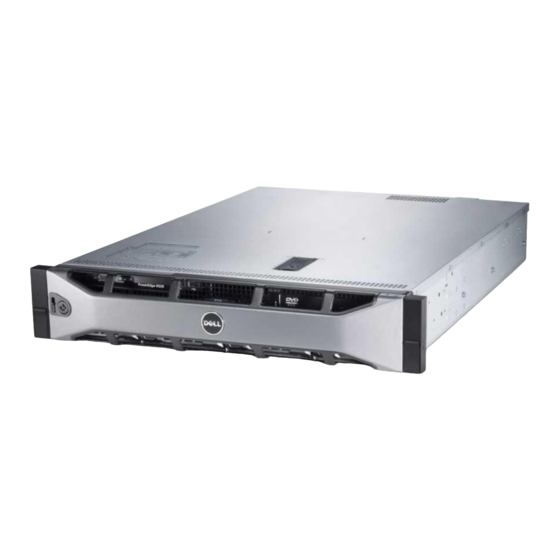Dell PowerEdge R520 기술 매뉴얼 - 페이지 29
{카테고리_이름} Dell PowerEdge R520에 대한 기술 매뉴얼을 온라인으로 검색하거나 PDF를 다운로드하세요. Dell PowerEdge R520 50 페이지. 2-socket, 2u rack server
Dell PowerEdge R520에 대해서도 마찬가지입니다: 매뉴얼 (11 페이지), 설치 매뉴얼 (8 페이지), 시작하기 매뉴얼 (9 페이지), 포트폴리오 매뉴얼 (27 페이지)

User-configurable settings: An R520 thermal control design target is to minimize the
contribution of fan power to overall system power. However, with the understanding and
realization that every customer has a unique set of circumstances or expectations of the system,
in this generation of servers, we are introducing limited user-configurable settings in the iDRAC7
BIOS setup screen. For more information, see the
Manual
on
Support.Dell.com/Manuals
Environments and Power Goals" on Dell.com.
Fan fault tolerance: Continuous operation with one motor failure in the system. The R520 base
configuration has four fans. An additional fan (Fan 1) is required if redundant power supplies are
used, and another fan is required if a second processor is used (Fan 6). R520 supports fan fault
tolerance for all six fans.
Cooling redundancy: The R520 allows continuous operation with a fan failure in the system. The
base configuration of the R520 has four fans. Additional fans are needed when using redundant
power supplies and a second processor. The R520 supports fault-tolerant cooling for all six fans.
Environmental specifications: The optimized thermal management makes the R520 reliable
under a wide range of operating environments as shown in the environmental specifications in
Table 25. Many configurations are also compliant under expanded operating temperature
environments, but a few are not.
The acoustical design of the PowerEdge R520 reflects the following:
Versatility: The PowerEdge R520 saves you power draw in the data center, but it also is quiet
enough for the office environment in typical and minimum configurations. Compare the values
for LpA in Table 17 for these configurations, and note that they are lower than ambient
measurements of typical office environments.
Adherence to Dell's high sound quality standards: Sound quality is different from sound power
level and sound pressure level in that it describes how humans respond to annoyances in sound,
like whistles and hums. One of the sound quality metrics in the Dell specification is prominence
ratio of a tone, which is listed in Table 17.
Noise ramp and descent during bootup from power off: Fan speeds and noise levels ramp
during the boot process (from power off to power on) in order to add a layer of protection for
component cooling in the case that the system were not to boot properly. To keep bootup as
quiet as possible, the fan speed reached during bootup is limited to about half of full speed.
Noise level dependencies: If acoustics is important to you, you may want to make the following
configuration choices and settings for the PowerEdge R520 for quieter operation:
In the BIOS, select the power-optimized DAPC rather than performance-optimized for the
-
system thermal profile
Turn hot spare feature off in PSU
-
Since hard drive noise is highly dependent on spindle speed, the 7200-rpm SATA hard drive
-
will have the quietest hard drive operation
However, some components cause significant but not necessarily intuitive increases in loudness
when they are installed in the R520. Contributors to acoustical output can include:
More than one processor
-
Number of DIMMs
-
PERC H710 mini, PERC H710P mini, or PERC H810
-
Dell PowerEdge R520 Systems Owner's
and "Advanced Thermal Control: Optimizing across
